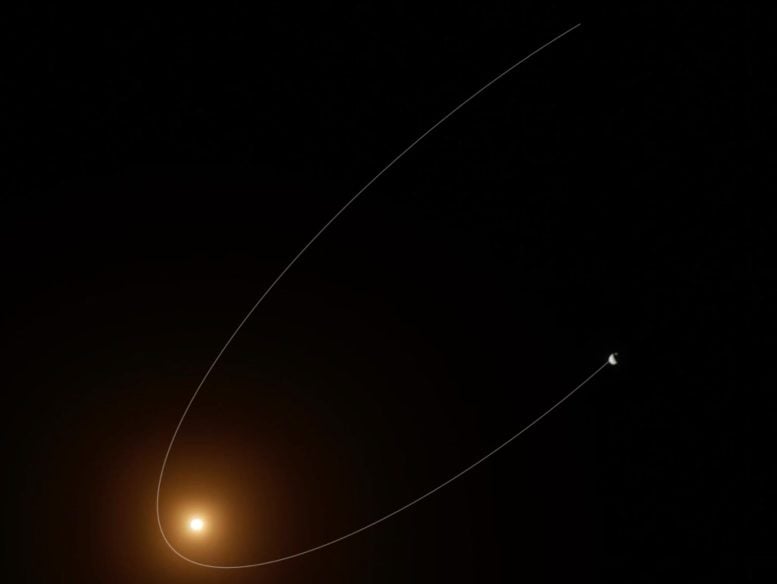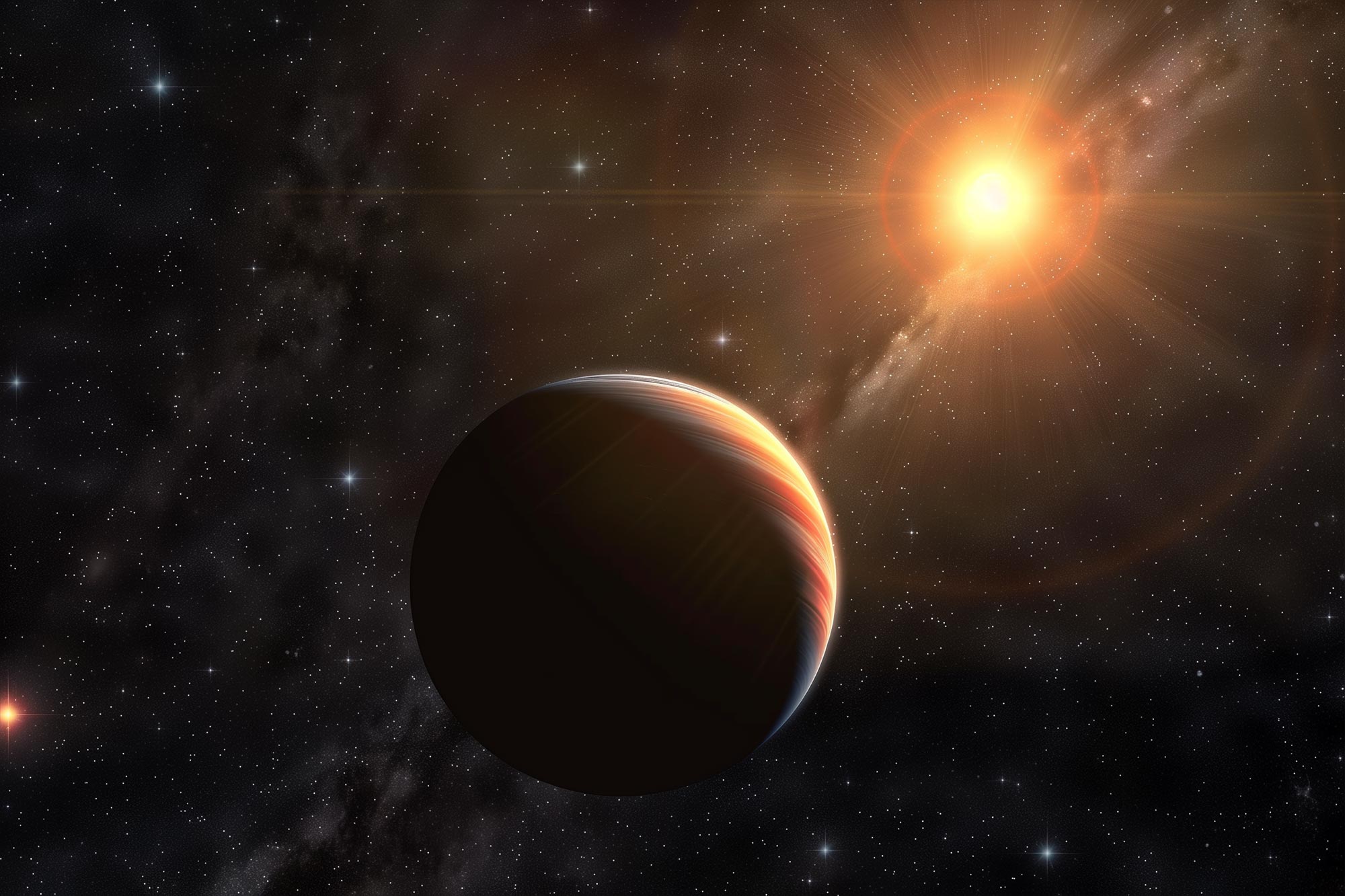An Mahadevan explained that the term “eccentric” refers to the shape of a planet’s orbit, which is measured on a scale from zero to one, with zero being a perfectly circular orbit. This exoplanet, named TIC 241249530, has an orbital eccentricity of 0.94, making it more eccentric than the orbit of any other transiting exoplanet ever found. For comparison, hot Jupiters — large, Jupiter-like exoplanets that orbit very close to their star, much closer than Mercury is to our sun. How hot Jupiters end up in such close orbits is a mystery, but astronomers suspect that they begin in orbits far from their star and then migrate inward over time. The early stages of this process have rarely been observed, but with this new analysis of an exoplanet with an unusual orbit, astronomers are one step closer to unraveling the hot Jupiter mystery. “Astronomers have been searching for exoplanets that are likely precursors to hot Jupiters, or that are intermediate products of the migration process, for more than two decades, so I was very surprised — and excited — to find one,” Gupta said. The discovery and characterization of the exoplanet was enabled by three instruments built at Penn State: the DOI: 10.1038/s41586-024-07688-3 Other Penn State co-authors are Jessica Libby-Roberts, a postdoctoral fellow, Megan Delamer, a graduate student, and Donald Schneider, distinguished professor of astronomy and astrophysics. This work was funded by Penn State, the National Aeronautics and Space Administration (NASA), The Center for Exoplanets and Habitable Worlds, NASA-NSF Exoplanet Observational Research (NN-EXPLORE), NASA Exoplanet Exploration Program, The NASA Ames Research Center, The Robert Martin Ayers Sciences Fund, The U.S. National Science Foundation (NSF), The Agencia Estatal de Investigación of the Ministerio de Ciencia e Innovación, the Nicolaus Copernicus University in Toruń, Polan, The Spanish Ministry of Science and Innovation (MICINN) through the Spanish State Research Agency, The TESS Guest Investigator Program, The Heising-Simons Foundation, the University of Texas at Austin, Ludwig-Maximillians-Universitaet Muenchen and Georg-August Universitaet Goettingen.
Insights From Orbital Eccentricity
This website uses cookies so that we can provide you with the best user experience possible. Cookie information is stored in your browser and performs functions such as recognising you when you return to our website and helping our team to understand which sections of the website you find most interesting and useful.











/https://tf-cmsv2-smithsonianmag-media.s3.amazonaws.com/filer_public/34/31/3431771d-41e2-4f97-aed2-c5f1df5295da/gettyimages-1441066266_web.jpg)








Discussion about this post